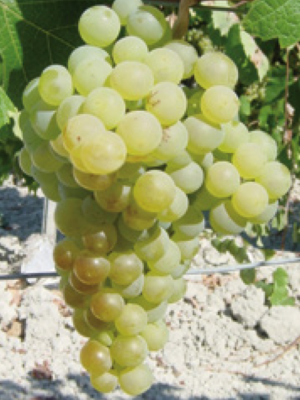 DELIVERY FROM £4.95
DELIVERY FROM £4.95 FREE DELIVERY FOR ORDERS OVER £100
FREE DELIVERY FOR ORDERS OVER £100Home » Community » Wine and Grape Guide » Grillo

The Grillo grape is one of Italy’s most treasured white grape varieties, with deep roots in Sicilian viticulture. Originally believed to be a cross between Catarratto and Zibibbo (Muscat of Alexandria), Grillo thrives particularly well in western Sicily, where its ability to withstand high temperatures and dry conditions makes it an ideal grape for the region’s warm Mediterranean climate. This resilience has cemented Grillo’s reputation as one of Sicily’s flagship white grape varieties.
Known for its semi-aromatic qualities, the Grillo grape naturally produces wines with a high alcohol content and an excellent capacity for ageing. While many Sicilian whites are enjoyed young, Grillo stands out for its ability to develop complexity and depth over time, making it a favorite among both winemakers and collectors looking for age-worthy Italian white wines.
One of Grillo’s most important contributions to Italian winemaking is its role in the production of Marsala wine, Sicily’s world-famous fortified wine. Grown extensively around the Marsala area, Grillo is traditionally blended with other local grapes such as Inzolia and Catarratto to create the distinctive sweet and dry styles of Marsala. However, the best examples of Marsala are often dominated by Grillo, prized for its ability to impart structure, richness, and vibrant acidity to the wine. The grape's natural robustness and balance are key factors in creating Marsala’s long-lasting and complex character.
Beyond fortified wine, Grillo has seen a resurgence as a varietal wine in its own right. When vinified solo, Grillo showcases a stunning expression of Sicilian terroir, producing white wines of notable depth, freshness, and longevity. Its ageing potential often surpasses that of other Sicilian white wines, with the exception of the prestigious whites from the volcanic soils of Mount Etna. Thanks to modern winemaking techniques, Grillo wines today offer a fresher, more aromatic profile.
Visually, wines made from Grillo are marked by a bright, light straw-yellow hue. Aromatically, they open with vibrant fruity notes - think lemon, grapefruit, and white peach - beautifully intertwined with floral aromas of wildflowers and orange blossom. Some expressions, especially those aged on lees or matured in oak, may also reveal subtle hints of almond, honey, and spice, adding layers of complexity to the bouquet.
On the palate, Grillo wines are celebrated for their freshness, elegant structure, and a crisp, mineral-driven finish. A slight salinity often emerges, reflecting the maritime influence of Sicily’s coastal vineyards. This savory edge, combined with lively acidity and a medium to full body, makes Grillo extremely versatile at the table.



Before we say ciao, why not join our newsletter & stay up to date on everything happening on planet Italyabroad.com